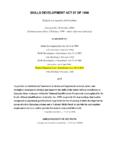Transcription of Assessment of the Human Resource Development Practices …
1 Public Service CommissionJune 2011 Assessment of the Human ResourceDevelopment Practices in thePublic ServiceCustodian of Good GovernanceVisionThe Public Service Commission is an independent and impartial body created bythe Constitution, 1996, to ehance excellence in governance within the PublicService by promoting a professional and ethical environment and adding value toa public administration that is accountable, equitable, efficient, effective, corruptionfree and responsive to the needs of the people of South Public Service Commission aims to promote the constitutionally enshrineddemocratic principles and values of the Public Service by investigating, monitoring,evaluating, communicating and reporting on public administration. Through researchprocesses, it will ensure the promotion of excellence in governance and the deliveryof affordable and sustainable quality of Good GovernanceiAssessment of the Human ResourceDevelopment Practices in the Public ServicePublished in the Republic of South Africa by:THE PUBLIC SERVICE COMMISSION (PSC) Commssion HouseCnr.
2 Hamilton & Ziervogel StreetsArcadia, 0083 Private Bag X121 Pretoria, 0001 Tel. (012) 352-1000 Fax (012) 325-8382 Website. Anti-Corruption Hotline Number for the Public Service:0800 701 701 (Toll-Free)Compiled by Branch: Monitoring and EvaluationDistributed by Directorate: Communication and Information ServicesPrinted by: Okusha Designs ccISBN: 978-0-621-40459-3RP: 268/2011 ForewordiiHuman resources (employees) are an integral elementto the functioning of any organization, yet enjoy abackwater status, and are not taken seriously at all to harness the potential of individuals, eachwith their own needs, views and opinions, means thatone must manage this Resource with due sensitivity toproviding constant stimulation and satisfaction. This meansorganizing the work in such a manner that it inspiresand promotes intrinsic motivation, rather than work thattakes place only when there is supervision or a task of growing, motivating and improving individualskills, training and Development needs remains one ofthe most challenging aspects facing an to such challenges it is critical for organisations to implement credible Human ResourceDevelopment (HRD) interventions.
3 To assist departments with training and Development theDepartment of Public Service and Administration (DPSA) developed the initial HumanResource Development Strategy (HRDS) for the Public Service (2002 - 2006). However itsoon became evident that many challenges in both service delivery and Human resourcedevelopment necessitated a review of the HRDS 2002-2006 and this was undertaken by theDPSA in 2007. The Human Resource Strategic Framework Vision 2015 was launched in 2008and the revised edition of the strategy aims to transform the Public Service through its peopleas initially intended in it has been determined that skills Development Plans (SDP's) are in place in mostdepartments and that training is taking place, concerns have continued to be raised about theapparent lack of Human Resource (HR) capacity in the Public Service.
4 It is for this reason thatthe Public Service Commission (PSC) decided to undertake this study on the Assessmentof HRD Practices in the Public Service . The aim was to determine how departments formulatetheir skills Development Plans (SDP's), how training opportunities are identified, whetherthere are any monitoring mechanisms in place to determine the impact of the training anddevelopment on performance of employees and what the reasons for non-compliance are,if SDP's are indeed, in PSC has found that overall, departments generally comply with the legislative frameworkin that they have the necessary policy documents in place, training is being undertaken andthey generally submit the Workplace skills Plans (WSP) and Annual Training Reports (ATR)as required, to the Public Sector Education and Training Authority (PSETA).
5 Analysis of thevarious policy documents and engagement with the HRD practitioners shows that a numberof challenges are still being faced with proper implementation of policy and determining thereturn on training investment. It gives me great pleasure to present the report on thisassessment. I trust that you will find this Assessment PM TENGENIDEPUTY CHAIRPERSON: PUBLIC SERVICE COMMISSION iiiivTable of ContentsLIST OF ACRONYMSviEXECUTIVE of the ConclusionxiiCHAPTER1: of the Public Service of the of the of the Report3 CHAPTER 2: THE LEGISLATIVE and Regulatory Framework5 CHAPTER 3: ANALYSIS OF with Legislation, Strategy and Policy of Workplace skills Plan and skills HRD Structures and Assessment of Training and Development Policies and Impact Assessment of Training and Development 1 % skills Provided by PSETA, PALAMA and other Training Summary24 CHAPTER 4: RECOMMENDATIONS AND Conclusion27 APPENDIX A28 REFERENCES33 LIST OF GRAPHSG raph 1.
6 Strategic and HR Plans, HRD Strategy and Alignment to Strategic Plan11 Graph 2: skills Audit and Workplace skills Plan12 Graph 3: skills Training and Development Programmes18 LIST OF FIGURESF igure 1: HRD/ skills Committees16 LIST OF TABLEST able 1: Amount spent on Bursary Programmes19 LIST OF DIAGRAMSD iagram 1: Documents to be consulted to develop WSP15vviList of AcronymsABETA dult Basic Education and TrainingAPPA nnual Performance PlanBCEAB asic Conditions of Employment ActDPSAD epartment of Public Service and AdministrationEEEmployment EquityHODHead of DepartmentHRHuman ResourcesHRDH uman Resource DevelopmentHRMH uman Resource ManagementHRPH uman Resource PlanIDP/PDPI ndividual Development Plan / Personal Development PlanLRAL abour Relations ActMMSM iddle Management ServiceMTEFM edium Term Expenditure FrameworkPAPerformance AgreementPALAMAP ublic Administration Leadership and Management AcademyPERSALP ersonnel Salary SystemPFMAP ublic Finance Management ActPMDSP erformance Management and Development SystemPSAP ublic Service ActPSCP ublic Service CommissionSCMS
7 Upply Chain ManagementSDAS kills Development ActSDLAS kills Development levy ActSETAS ector Education and Training AuthoritySMSS enior Management ServiceSSPS ector skills PlanWSPW orkplace skills PlanExecutive Public Service is a labour intensive employer who is dependent on the quality, skills andperformance of its employees. There is a policy framework in place for Human ResourceDevelopment (HRD) in the Public Service and it is crucial to monitor its implementation toensure that its objectives are achieved. It is for this reason that the PSC decided to undertakethe study on the Assessment of Human Resource Development Practices in the Public Servicein order to determine whether training and Development is directed at the core skills thatdepartments need to deliver on their strategic objectives, whether appropriate monitoringmechanisms are in place to ensure that training and Development plans are implementedaccordingly and whether the impact of such training is OF THE STUDYT hrough this report the PSC aimed to - Assess whether departments have identified the core skills they require in order to achievetheir strategic objectives.
8 Assess the effectiveness of the process of developing the skills Development Plansto address capacity shortages. Determine the rate of compliance with HRD strategies and policies, the Development andimplementation of skills Development plans and the reasons thereof. Identify and propose best Practices that can be implemented within the departmentsto address challenges that are being study was conducted within the National and Provincial Departments of Transport,Agriculture, Forestry and Fisheries and Treasury. Thus, a total of 30 departments participatedin the study. These departments were selected on the basis of the role they play towardsefforts to improve rural Development and poverty alleviation which were identified as partof the key priority areas of methodology followed in the gathering of data was as follows: A desktop study of previous reports produced by the PSC.
9 A questionnaire was used during interviews with Managers responsible for the HumanResource Development Practices within the sampled Strategic Plans, Human Resource Plans, Retention Policies, Human Resource DevelopmentStrategies and Policies of the sampled departments were obtained to ascertain whethersampled departments understand the link and assess their compliance with the DPSA'sHuman Resource Development Strategy Vision existence of Human Resource Plans, Human Resource Development Strategiesand PoliciesIt was encouraging to note that 97% of the sampled departments had developed andimplemented HR plans. Only 3 % did not have HR plans in place. Of the 97% that did haveHR plans, only 10% were in draft format, however, they all complied with the requirementsnecessary for HR study also found that only 53% of the sampled departments had HRD strategies in these, only 63% complied with the basic requirements for an HRD strategy.
10 Seven (7%)of the sampled departments had a training policy in place and 3% had an implementationplan in place, instead of a strategy. 37% of the sampled departments did not have any HRDstrategy or policy in Workplace skills Plans (WSP) and skills AuditThe Workplace skills Plan is an annual plan derived at after consultation between managementand employees aimed at addressing the skills shortages identified in a department to enableit to meet its strategic objectives. Of the sampled departments, 97% had WSPs in place, hadsubmitted them to PSETA and analysis of these documents showed 100% compliance withthe requirements for drafting skills audit is the process of measuring and recording the skills of an individual or group. Inan organisation, this is done to identify the skills and knowledge that the organisation currentlyhas, in relation to what the organisation needs in order to be effective.



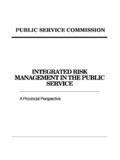


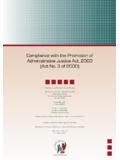





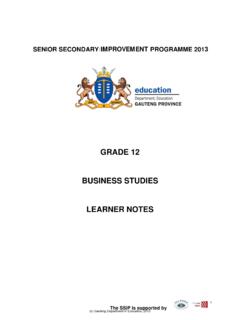
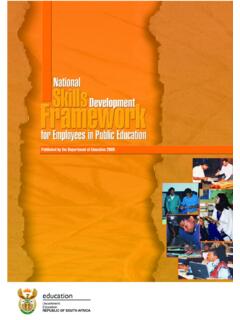

![Skills Development Levies Act [No 9 of 1999] - Gov](/cache/preview/e/8/8/9/0/9/5/f/thumb-e889095f2851a12d7a402b625825ab7f.jpg)
